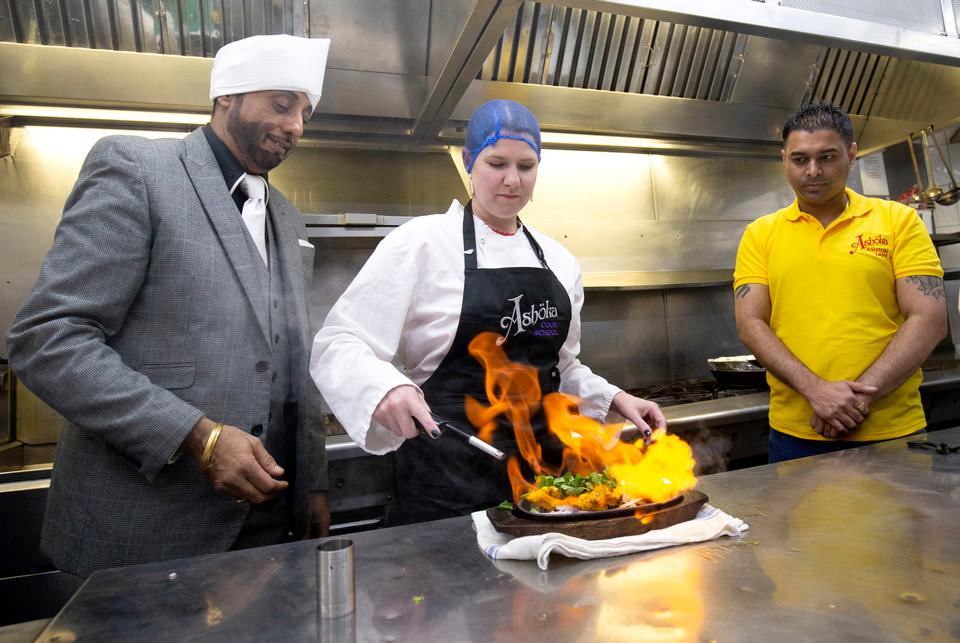British foodies have now moved beyond chicken tikka masala to appreciate diverse dishes from the subcontinent.
South Asians have profoundly shaped British culture in many ways — through music, fashion, literature and language (jungle and bandana, for example, are Hindi words).
The most prominent influence has been food. Sales of South Asian food are worth £5bn annually. There are approximately 9,000 South Asian restaurants in the country, and more in Greater London than in Delhi and Mumbai combined. Chicken tikka masala is Britain’s national dish, and National Curry Week is celebrated every October.
But this is not simply a feel-good tale of mouth-watering flavours and multiculturalism. It is also about the shadows of colonialism, Britain’s cultural kleptomania and the resilient determination of entrepreneurial South Asians to thrive in a hostile environment.
When South Asian migrants moved to the UK in large numbers in the 1950s to rebuild the economy of the country by filling post-war labour shortages, they faced poverty and racism that denied them entry into many public venues.
“Opening restaurants came with cheap overheads. Initially, the clientele were other South Asians, but by the mid-1970s, South Asian cuisine, and in particular Punjabi cuisine, came to be seen as a cheap and exotic night out for Brits,” explains Jasvir Singh, co-founder of South Asian Heritage Week.
“The diverse range of eateries that are South Asian throughout the UK today is a tribute to the cuisine itself, as well as the ground-breaking restaurateurs who helped embed South Asian food in British culture in the first place.”
Edward Anderson, a senior lecturer in history at Northumbria University in Newcastle, says the commercial and cultural success of the cuisine has not come without struggles and prejudices.
“It has historically been demonised by many as unhealthy, unhygienic, or ‘smelly’, and people often report that customers behave in particular ways in Indian restaurants —arguably connected to a sense of entitlement, racism, or even colonial nostalgia,” he adds.
Food from South Asia is commonly branded as Indian though most of the restaurants are run by Bangladeshis and Pakistanis. South Asia encompasses seven nations but in Britain the diaspora consists mostly of people from India, Pakistan and Bangladesh. Lizzie Collingham, author of “Curry: A Tale of Cooks and Conquerors”, says few diners “know the history of how India partitioned into several countries”.
To appeal to a largely ignorant market, Bangladeshis and Pakistanis branded their food as Indian and served mostly generic curries that appealed to their customers’ stereotypes.
‘Indian’—which became a euphemism for South Asian—restaurants proliferated in the 1980s and it was at that point ‘desi’ cuisine affirmed its position in the wider culture.
“It gained a hold over the imagination in the way other foods don’t. I think that’s because of the colonial past. At the time [then Prime Minister Margaret] Thatcher was looking back at the empire with nostalgia and there was a kind of sense of ‘wasn’t Britain great’ in a way that’s being revived now in an even worse fashion.
“India was considered the ‘jewel in the crown’ of the empire. That’s why South Asian food is cemented. We saw India as ours, we see Indian food as ours. That has a long history and you can’t get away from the colonial overtone,” Collingham says.

Currying disfavour
The word curry is frequently used as a catch-all phrase for all South Asian food in the west but isn’t used in South Asia itself. It was coined by colonists to generalise Indian cooking and continues to serve the same purpose today. Some are now calling for it to be ditched or applied only to its relevant usage i.e., dishes created during or shortly after the colonial period.
“At the time of the Raj there wasn’t an appreciation of the culinary sophistication of Indian food. A lot of people in Britain still think ‘yeah, they just eat curry and it’s just a spicy sauce’,” says Collingham.
Sanjana Modha, a British food blogger with Indian roots, believes a lot of education is needed about the variety in South Asian cuisine.
“I do think the term ‘curry’ is a bit lazy. It’s not as useful or informative as using the specific name of a particular dish, for example, matar paneer, sarson da saag, gatte or tarkari. These are all regional Indian specialities with their own specific ingredients, methods of preparation and of course, their own stories,” she says.
In recent years, several restaurants have emerged, serving regional Indian cuisine, including Gujarati, Malayalee (from Kerala) and Maharashtrian. Sri Lankan food has also seen a spike in demand.
Anderson says the curry house model, with its standard menu of dishes unfamiliar to people from the subcontinent, is no longer as popular.
Brick Lane, aka Banglatown, in central London had many restaurants operating on this model. The number of outlets has more than halved from 60 to 23 in just 15 years.
“Regional cuisine is much more celebrated now. The expectation that Indian restaurants are unrefined and should be cheap, for many, is fading,” Anderson adds.
As knowledge about South Asian food grows, close observers like Singh are optimistic.
“The explosion of South Asian street food places has been great to see. Food such as pani puri, bhel and dosai are getting their time to shine as well as win the hearts and stomachs of the British public. Also, the emergence of chain restaurants is helping to show there is much more to South Asian cuisine than the local curry place. Long may it continue.”














0 Comments